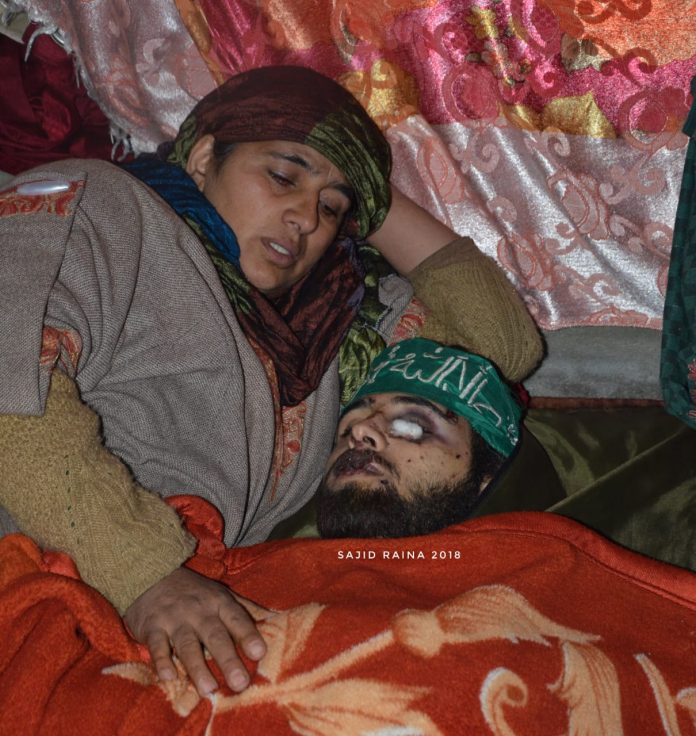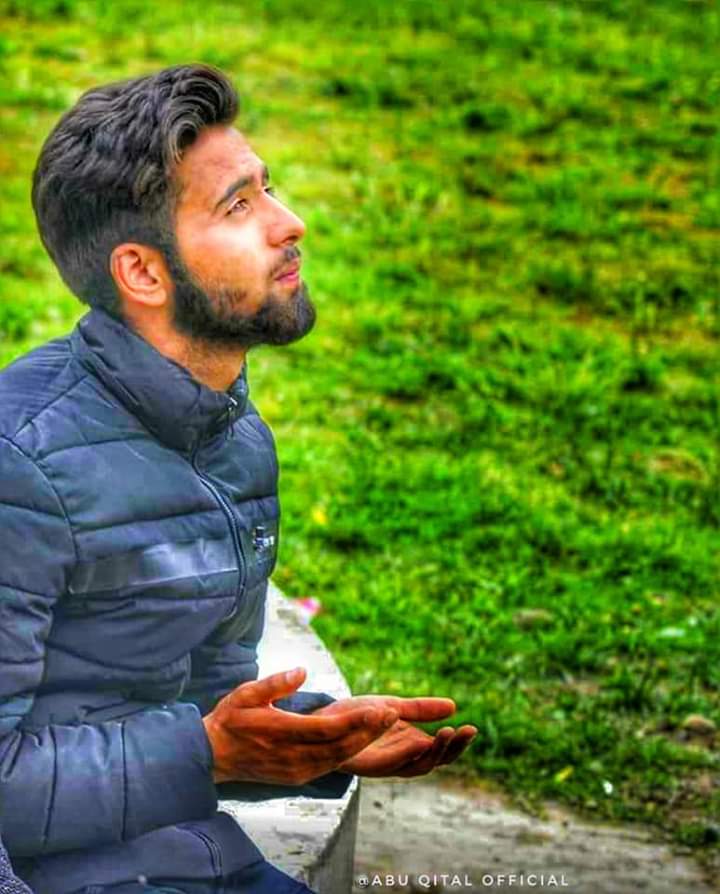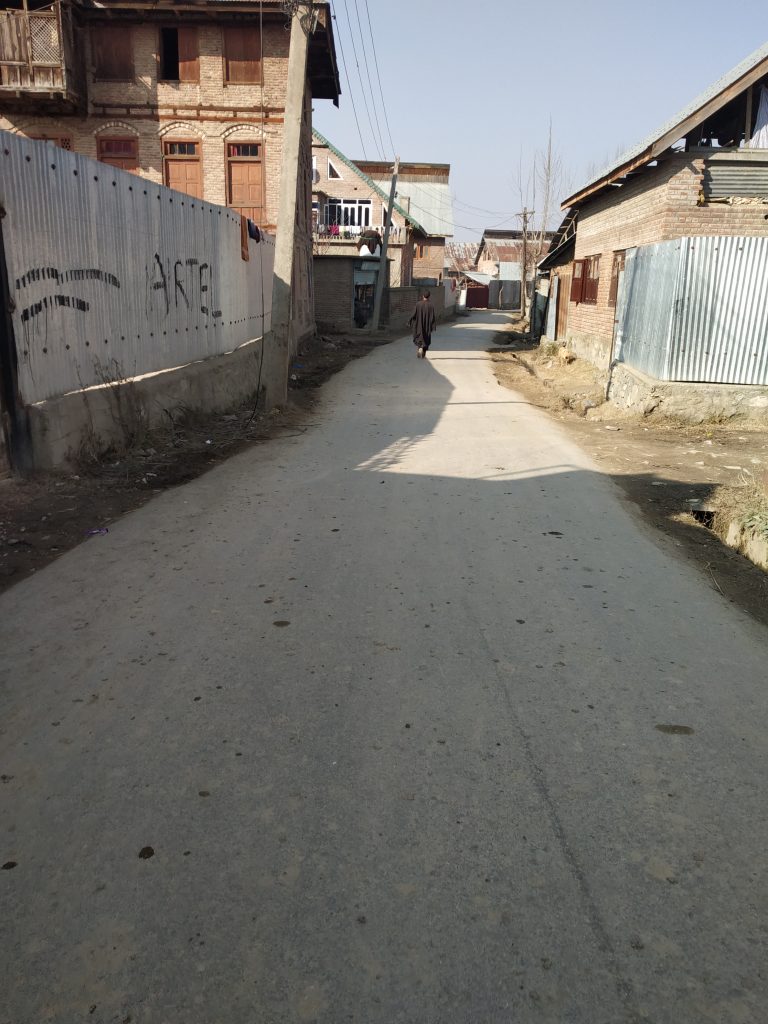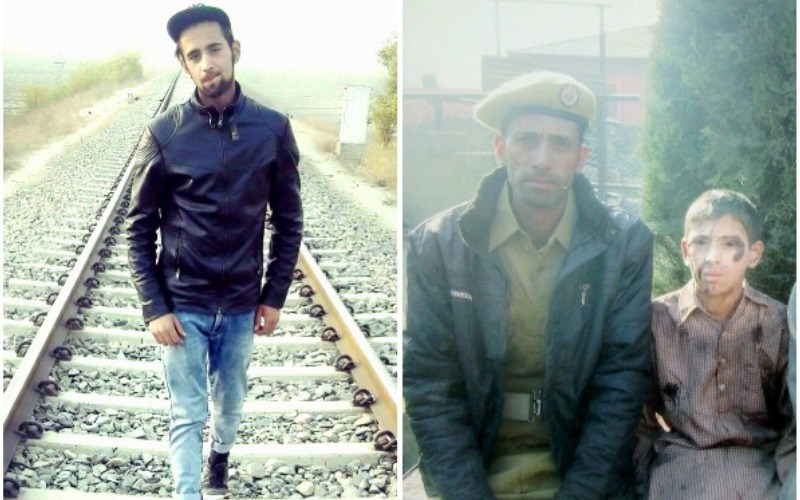
What are many Indian teengaer’s biggest concerns when they are 15 years old? Homework? Upcoming exams? Family pressures? No We do not need an expert to tell us that teenagers are subject to extreme social pressures. Now, imagine all these issues and place it in the context of a conflict that has been raging in your region for as long as you can remember; for as long as your parents can remember.
No one has an easy life in Kashmir, but can we even begin to imagine the kind of pressure, anger, disbelief, frustration and general helplessness that a school student in Kashmir undergoes? A student in a town like Shopian, for example, might consider himself lucky just to be alive: they have seen their friends being shot, injured, and arrested. As a Kashmiri teenager, what do you do? Not protest against the occupation? That might still get you caught in a crossfire. Keep quiet and focus on your studies? How do you do that when there is an encounter happening right next to your house? Or when tear gas shells land inside your house?
In December, two teenagers–Saqib Majeed and Mudassir Paray–became another statistic in Kashmir. They were killed in an encounter with security forces and Indian media barely noticed the fact that the two ‘militants’ were 17 and 14 years old It made no difference. What forces a 15-year-old to pick up a gun? What forces a 12-year-old to pick a stone to hurl at security forces? What makes a 17-year-old believe that death at the hands of Indian forces is a better option that living a ‘normal’ life?
In this 6-part series, TwoCircles.net’s Kashmir correspondent Auqib Javeed looks at all the aspects of being a teenager in Kashmir: a militant, a protester, a mere bystander and a victim. If you pick a gun, you will be labelled a militant and shot; if you pick a stone, you will be labelled ‘anti-India’ and arrested and put in juvenile homes. If you are lucky, you will only be beaten up a little; if you are not, you will end up with bruises that will never leave you. And if you do neither, you still stand a very high chance of ending up being arrested or killed.

‘Encounter of Saqib and Mudassir shows Hajin is no longer identified with Ikhwanis’
Hajin: – In most places, the death of a teenager is likely to mean a steady stream of people consoling the family who lost their son. In Hajin, Bandipora, however, the situation is different. No doubt that everyone feels the pain of the loss, but in a conflict-torn region where the side you take, can become the matter of life and death, the locals believe that they are now firmly on the side of ‘Azadi’. And more importantly, the notion that they are the base of the dreaded Ikhwanis gets eroded everyday. Hajin has been in the news for all sorts of reasons: its residents have even faced “social boycott”. But what was once notorious for housing pro Indian groups has now given its youngest “heroes” to the “Tehreek” (freedom movement).
“Shakur Khudays kun, daag chu mittan dokh koth dou (Thanks to Almighty that the blot on our village is getting removed day by day), says an old man who must be in his 60s in the room packed with locals and some visitors who had come to condole the parents of Saqib Majeed , a 17 year old youth who was killed during an encounter in the Mujgund area of Srinagar City.
Parrey Mohalla area of Hajin, once know for hot-bed for Ikhwan-ul-Muslimoon. Auqib Javeed

“More youth will join militancy now, as the martyrdom of Saqib jaan has set a spark in the area. We were facing tough times due to this Ikhwan tag but it was overwhelming to see thousands of people from different parts of valley participating in his funeral prayers and visiting to express their sympathy” said the old man while one of the local responded by saying that Hajin (in North Kashmir) was akin to south Kashmir nowadays.
This explains why people travelled from South Kashmir to reach Hajin.
In December 2018, two ‘minor’ militants Mudasir Parrey, 14, and Saqib Bilal Sheikh, 17, both from Hajin along with a Pakistani militant identified as Ali Bhai, were killed in an encounter with Indian security forces in the outskirts of Srinagar City. The encounter also resulted in the destruction of seven residential houses. The killing of two teenagers has infused a new life in the resistance movement of the area with experts predicting more locals from the area might follow the minor duo.
What makes Saqib’s involvement even more ironical is that his house is parallel to the house of Mohammad Yousuf Parray, alas Kuka Parray-the founding father of Counter-insurgency moment, Ikhwan-ul-Muslimoon. He is accused of abetting the killing, raping, torturing and disappearing thousands of Kashmiris. For locals, the situation has changed now as the area has now given “young blood” to the freedom movement.
“They (Ikhwanis) had put a blot on our image; we were seen as mukbirs (informers) everywhere we used to go. The students would be teased in schools and colleges by other students. But things are changing now. Imagine a teenager from Kuka paray’s Mohalla leaving behind everything and joining militant ranks with another teenager from the same area,” says Nazir Ahmad, a resident of Hajin who had come to visit the bereaved family of Saqib.
Saqib and Mudasir were friends and used to play football together in the local Eidgah (a place where Muslims offer Eid prayers). Like other teenagers, the duo used to participate in protest rallies. But in September they left everyone shocked when gun-wielding pictures of the duo went viral on Social media.
“Everyone in the area participates in protest rallies, Saqib and Mudasir would also join them but no one knew they would join militancy at this age,” says a friend of Saqib who accompanied this correspondent to his home in Parrey Mohalla.

He says Saqib was a brilliant student and used to wear branded clothes, watches and shoes. “When he did a cameo in Bollywood blockbuster ‘Haider’, he used to narrate stories of his acting.” he adds.
“Everyone was his fan in the area as he had acted in the movie. We used to spend a lot of time together but I never imagined that he would be killed in an encounter,” says the friend, wishing anonymity due to the fear of being summoned by the police if they find his name in the “press”.
The family was serving lunch to the visitors who had come from far-flung areas to show their sympathy.
“Look at this old man; he has come from Shopian area of South Kashmir (about 95 kilometres from Hajin) to express his condolences ,” says Aijaz Ahmad, maternal Uncle of Saqib Sheikh.
“This shows how much people are sincere towards the freedom movement and their love for those who are giving their kids for this thareek,” Aijaz says.

Aijaz, who helped Saqib get a role in the movie Haider, says youth are being pushed towards violence by the state “and if this continues, it will be nothing short of a catastrophe.”
In another room, Mehbooba is attending to the guests. She has decided to serve them herself as “God has given her strength” to move on, she says.
Her picture with the bullet-ridden corpse of her son went viral on social media last year in the month of December. For a mother who just lost her son, her strength is both amazing and unimaginable. She, in fact, sat down with this correspondent for a detailed interview:
How are you feeling right now?
I am very happy and thankful to Allah for accepting my son in his way. He was created by Allah and was trusted to me, now he has returned back to Him. I don’t know why he joined militancy nor did he seek my permission for the same but I am content with the way he died in God’s way.
Did you meet him after he joined militancy?
He left his home in August 2018 to buy some eatables but didn’t return till late evening, we searched for him here and there but all in vain. After many days, we came to know that he has joined militancy along with his friend Mudasir Parry from another Mohalla. For three months, we travelled to different places in Kashmir to meet him and to persuade him to return back but every time he used to evade because he knew that he would have to return if he met his mother.

How does it feel to be a militant’s mother?
I can tell you for three months, I was dying to see him and to hug him. I had forgotten to eat and sleep. I wanted to see my son reunited with me at all costs. Many peers (godmen) advised us to sacrifice animals and gold ornaments and I did so but he didn’t return. The only thing that was haunting me all the time was what will he do if he got trapped in an encounter? I used to accompany him even to the washroom as he would be too scared to go alone but he showed bravery and fought in the encounter like a well-trained militant. As soon as his body reached to me, I don’t know what kind of strength Allah gave me. I was surprised to see the family members of Ikhawanis wailing and beating their chests. Trust me I was feeling special and even today I have cooked the food for guests myself.
How did you spend a night with your dead son?
I just wanted to hug him once, when I saw his body I pleaded the men to at least keep him with me for a night and they also agreed. For the full night, I was keenly watching his newly-grown beard, his broad chest, his almond-shaped eyes. I can’t explain the smell of his body….it seemed that Allah has put his special perfume on his body. I told him to forgive me and remember me on the day of judgement. I was so satisfied that I myself called the male members of my family, in the morning to bury him. But one thing which is killing me inside and will hunt me throughout the life is that his face was mutilated by the Army. I saw his right eye was damaged with bullets and his lips were torn-apart probably with a brick. How could they do this to a kid?
In the third part of the series, we speak to Mudassir’s family, who explain how past experiences could have pushed their teenage son to join militancy.

